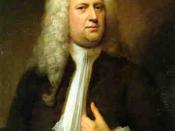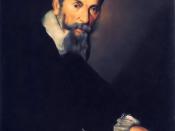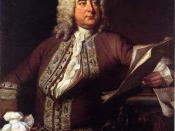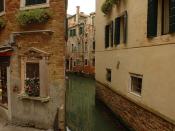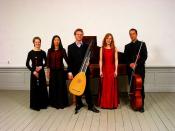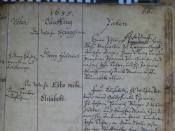Baroque Music The term "baroque," when applied to music, refers to the period 1600 to about 1750 in western Europe. Baroque is a Portuguese word meaning a pearl of irregular shape, in the sense of abnormal and grotesque. It later acquired a more favorable connotation especially in describing art of this era.
Major composers of the Baroque period are Claudio Monteverdi, Arcangelo Corelli, Henry Purcell, George Frideric Handel, Antonio Vivaldi, and of course Johann Sebastian Bach. Violin making was perfected by Stradivarius and the first piano was built during this time. The opera and oratorio forms were developed. There was freedom in creating new ways of organizing music, handling melodies, and exploring new styles and forms. By the end of the Baroque period, music was performed for ordinary people in concert halls, no longer just for loyalty and the wealthy. Due to increased public interest and support through paid performances, composers and musicians no longer had to depend upon the church and royalty for their livelihoods.
There was great demand for constant generation of new music since there was no "classics" and the average life span for a composition was no more than one year.
Baroque music can be divided roughly into three styles: church, chamber or concert, and theater. Music was written for specific instruments or voices whereas earlier compositions could be performed by any combination of voice and instrument. Characteristics peculiar to individual instruments were exploited resulting in an increased spectrum of color and expression. Wind instruments improved technically; virtuoso singing advanced. Composers strived to inject a wide range of emotions and to highlight them with violent contrasts. Dynamics, i.e. loudness modulation, became a part of music. Rhythm ran the gamut from irregular to flexible to constant, often used deliberately for contrast. Time signatures and measures marked off in bars came into use; strong and weak beats became recognizable.
An old idea was refined when composers became interested in writing music which had a solo line with an accompaniment. This took the form of opera when fused with a dramatically sung story. Venice and Florence, Italy became centers for operatic productions. Arias were written specifically to showcase the vocal talent of the soloists. Monteverdi's L'Orfeo which debuted in 1607 is one of these early works. The first public opera house was built in 1637 in Venice. After this beginning, Italian opera eventually grew to maturity more than a century later.
Dramatic music based on religious stories became known as oratorios. They differ form operas in that usually there is no movement of soloists on stage and no costumes. One of the more famous oratorios was Handel's Messiah.
Prodigious amounts of religious music, both instrumental and vocal, were written for all denominations of the Christian Church. Johann Sebastian Bach was the master of church cantatas which are compositions of alternating arias and responses based on a short narrative from the Bible resembling a scene from an opera.
Instrumental music became more standardized in form. In general terms, these works can be divided into five groups: fugal (e.g., fantasia), canzona, dances (e.g., suite), improvisatory keyboard solos (e.g., toccata, prelude), and pieces which vary a given melody (e.g., passacaglia). There are many overlaps among these categories which lead to much complexity.
Living in the Baroque era would have been a remarkable time to be alive. There were gifted composers composing magnificent masterpieces. Music flows with rhythm and recognizable melodies. As a beginning violinist, the music is easily understood although it is challenging to play. The melodies are straight forward and the interplay of harmonies and rhythms are interesting.
For further details, please see A History Of Western Music by Donald J. Grout and Claude V. Palisca, W.W. Norton & Company, Incorporated, New York, 1988.
